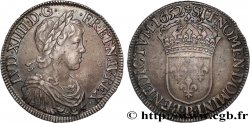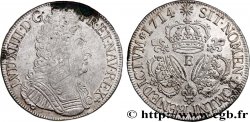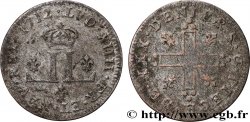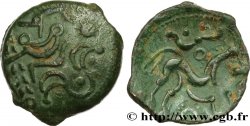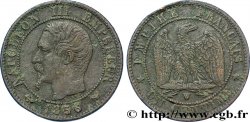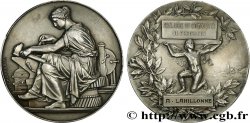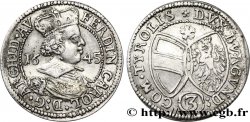fme_886117 - LOUIS XIV "THE SUN KING" Médaille, Pyramide corse élevée à Rome, frappe postérieure
недоступный.
Товар уже продан в нашем интернет-магазине (2024)
Цена: : 850.00 €
Товар уже продан в нашем интернет-магазине (2024)
Цена: : 850.00 €
Тип Médaille, Pyramide corse élevée à Rome, frappe postérieure
Дата: (1664)
Металл: silver
Диаметр: 55,5 mm
Ориентация осей монеты: 12 h.
Вес: 79,55 g.
Век: lisse
Пуансон: sans poinçon
Комментарии о состоянии
Belle médaille en argent, probablement frappée sous la Restauration. Quelques frottements dans les champs suite à un ancien nettoyage. Faible usure, un peu plus marquée au revers. Présence de quelques fines rayures
Ссылки в каталоге: :
Лицевая сторона
Аверс: легенда: LVDOVICVS. XIIII. - D. G. FR. ET NAV. REX..
Аверс: описание: Buste cuirassé, drapé avec la cravate de dentelle, la chevelure longue, de Louis XIV à droite. Signé : R..
Обратная сторона
Реверс: легенда: OB NEF. SCELUS A CORSIS - EDIT. IN ORATOREM REGIS FRANC. // ROMA // À L’EXERGUE : MDCLXIV.
Реверс: Описание: La ville de Rome, sous la figure d’une femme assise, tenant un javelot et un bouclier sur lequel on lit : ROMA. A gauche la nouvelle pyramide.
Комментарий
En août 1662, les gardes de l’ambassadeur du roi de France à Rome eurent une querelle avec les gardes corses du pape. Du côté français, il y eut des blessés et même un mort. Comme la cour de Rome hésitait à présenter ses excuses, l’ambassadeur quitta la ville. Louis XIV, de son côté, ordonna le nonce apostolique de quitter la cour et occupa Avignon et le Comtat Venaissin. une guerre semblait éclater d’un moment à l’autre.
Finalement, une paix fut conclue entre le pape Alexandre VII et le roi de France. Louis XIV restituait le Comtat et le pape en échange offrait comme réparation le renvoi de la garde corse, une déclaration d’excuses du nonce et l’érection d’une pyramide à Rome, en mémoire à ces excuses.
La pyramide fut érigée au commencement de l’année 1664. Le 29 juillet de la même année, le neveu du pape, le cardinal Chigi, fut reçu en audience dans la chambre du roi et présenta les excuses de Rome (médaille 79). Le pape Clément IX, le successeur d’Alexandre VII, désirait la destruction de la pyramide, ce témoignage de l’humiliation papale. Louis XIV finit par donner son consentement et la pyramide fut détruite en 1668.
In August 1662, the guards of the King of France's ambassador in Rome had a quarrel with the Pope's Corsican guards. On the French side, there were injuries and even one death. As the court in Rome hesitated to apologize, the ambassador left the city. Louis XIV, for his part, ordered the papal nuncio to leave the court and occupied Avignon and the Comtat Venaissin. A war seemed likely to break out at any moment. Finally, peace was concluded between Pope Alexander VII and the King of France. Louis XIV returned the Comtat, and the Pope, in exchange, offered as reparations the dismissal of the Corsican guard, a declaration of apology from the nuncio, and the erection of a pyramid in Rome as a memorial to these apologies. The pyramid was erected at the beginning of 1664. On July 29 of the same year, the Pope's nephew, Cardinal Chigi, was received in audience in the king's chamber and presented Rome's apologies (medal 79). Pope Clement IX, the successor of Alexander VII, desired the destruction of the pyramid, this testimony to papal humiliation. Louis XIV finally gave his consent and the pyramid was destroyed in 1668
Finalement, une paix fut conclue entre le pape Alexandre VII et le roi de France. Louis XIV restituait le Comtat et le pape en échange offrait comme réparation le renvoi de la garde corse, une déclaration d’excuses du nonce et l’érection d’une pyramide à Rome, en mémoire à ces excuses.
La pyramide fut érigée au commencement de l’année 1664. Le 29 juillet de la même année, le neveu du pape, le cardinal Chigi, fut reçu en audience dans la chambre du roi et présenta les excuses de Rome (médaille 79). Le pape Clément IX, le successeur d’Alexandre VII, désirait la destruction de la pyramide, ce témoignage de l’humiliation papale. Louis XIV finit par donner son consentement et la pyramide fut détruite en 1668.
In August 1662, the guards of the King of France's ambassador in Rome had a quarrel with the Pope's Corsican guards. On the French side, there were injuries and even one death. As the court in Rome hesitated to apologize, the ambassador left the city. Louis XIV, for his part, ordered the papal nuncio to leave the court and occupied Avignon and the Comtat Venaissin. A war seemed likely to break out at any moment. Finally, peace was concluded between Pope Alexander VII and the King of France. Louis XIV returned the Comtat, and the Pope, in exchange, offered as reparations the dismissal of the Corsican guard, a declaration of apology from the nuncio, and the erection of a pyramid in Rome as a memorial to these apologies. The pyramid was erected at the beginning of 1664. On July 29 of the same year, the Pope's nephew, Cardinal Chigi, was received in audience in the king's chamber and presented Rome's apologies (medal 79). Pope Clement IX, the successor of Alexander VII, desired the destruction of the pyramid, this testimony to papal humiliation. Louis XIV finally gave his consent and the pyramid was destroyed in 1668








 Cообщить об ошибке
Cообщить об ошибке Распечатать страницу
Распечатать страницу Отправить мой выбор
Отправить мой выбор Задать вопрос
Задать вопрос Consign / sell
Consign / sell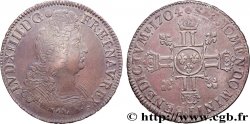
 Информация
Информация